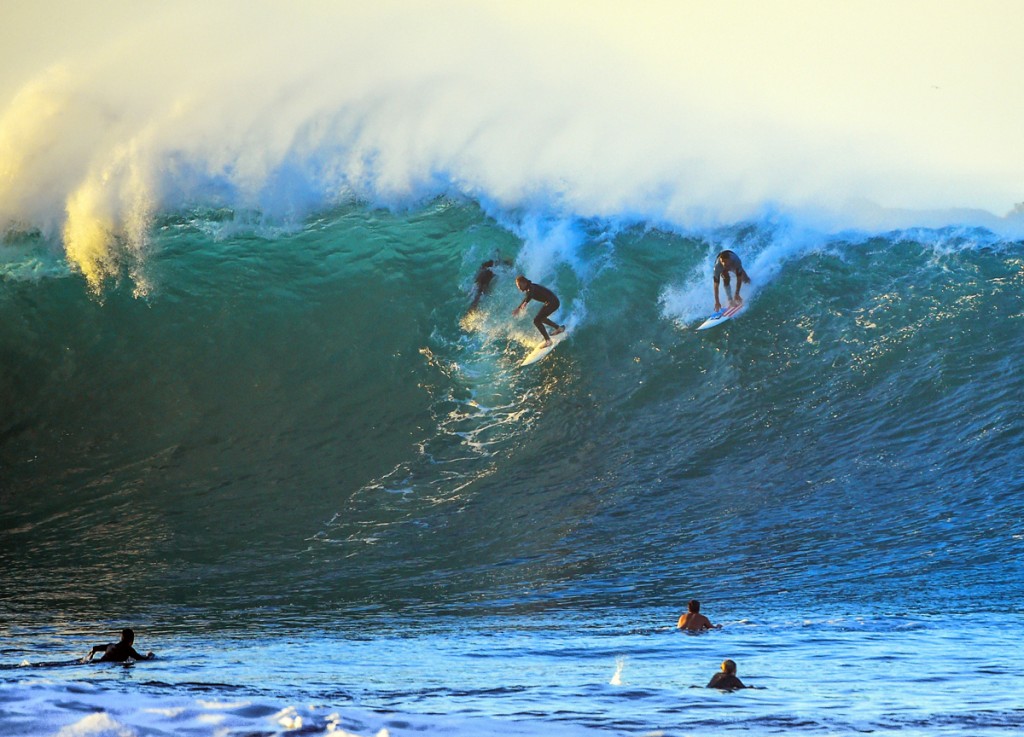
Headed to the beach for Labor Day weekend? Stay safe with Project Wipeout.
Newport has some of the most beautiful beaches in the world, but a majority of Orange County residents only hit the waves a few times a year, with Labor Day weekend being one of them.
An influx of inexperienced ocean swimmers means lifeguards expect to see an unfortunate uptick in accidents and injuries over Labor Day weekend. That is why Hoag’s Project Wipeout wants to get the word out about beach safety.
Project Wipeout was started 35 years ago this month, when five young men were admitted to the Hoag ICU with neck and spinal cord injuries related to surfing and swimming accidents at the beach.
Dr. Jack Skinner and other concerned Hoag physicians and nurses, along with local paramedics and lifeguards, decided something had to be done and developed educational material to help prevent injuries and save lives.
Today, Project Wipeout has reached millions of people, saving lives and preventing injuries at our beaches, by offering information and resources to keep people safe at the beach.
“When lifeguards are doing their jobs, the public doesn’t notice,” said Linda Reuter, program director of Project Wipeout at Hoag. “For every one rescue lifeguards make, they do three preventative actions such as pulling a swimmer out of trouble before that swimmer even knows he needs help.”
Similarly, Project Wipeout’s aim is to keep people from getting into trouble in the first place. Among Project Wipeout’s safety tips, the program teaches people how to break free from a rip current. Rip currents are one of the biggest reasons for drowning, and the untrained eye typically doesn’t see them.
That was the case for Andrew Meredith.
On Aug. 3, 2012, Meredith, now 23, of Tulsa, Okla., was vacationing in Huntington Beach. Body surfing with friends, Meredith took a large wave at the wrong angle and got caught in a rip current. He was tossed around by the waves like a T-shirt in a washing machine.
The waves pushed him to the shore, slamming his head into the sand. He heard a pop. The ocean had broken Andrew’s C1 cervical vertebra. The waves tossed him some more, and he heard two more pops. His T2 and T3 thoracic vertebrae fractured, too. Those are injuries that can kill, so Meredith was rushed to Hoag.
After surgery and six months in a neck brace, Meredith was healthy, pain-free and capable of doing everything he could do before, but Meredith knows his injuries could have been avoided altogether if he had been more knowledgeable about ocean safety before diving in. He hopes more people make use of Project Wipeout’s informational packets and website before hitting the beach.
“Some of it was a lack of knowledge,” Meredith said, of his own injury. “I hadn’t been body surfing in waves like that for many years, and I had forgotten the power of the waves.”
Project Wipeout safety tips include:
• Don’t dive head-first into water because the ocean floor is uneven. It’s best to test the depth of water with your feet, not your head.
• Check in with the lifeguards when you get to the beach. Lifeguards can tell you what the ocean conditions are like and whether it’s a good idea to swim.
• If you’re caught in a rip current, stay calm and don’t fight the current. A rip current will pull you away from the shore, but it will not pull you under water. To escape, swim parallel to the shore, until you are out of the current. Then swim at an angle away from the current toward the shore.
For more information, visit hoag.org/ProjectWipeout.




